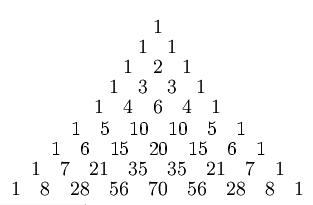
In Pascal’s triangle, above, the number in each cell is the sum of the two immediately above it.
If you “tilt” the triangle so that each row starts one column to the right of its predecessor, then the column totals produce the Fibonacci sequence:

That’s from Thomas Koshy’s Triangular Arrays With Applications, 2011.
Bonus: Displace the rows still further and they’ll identify prime numbers.
